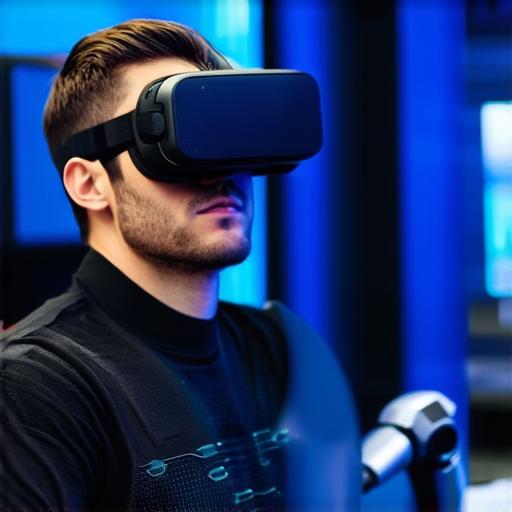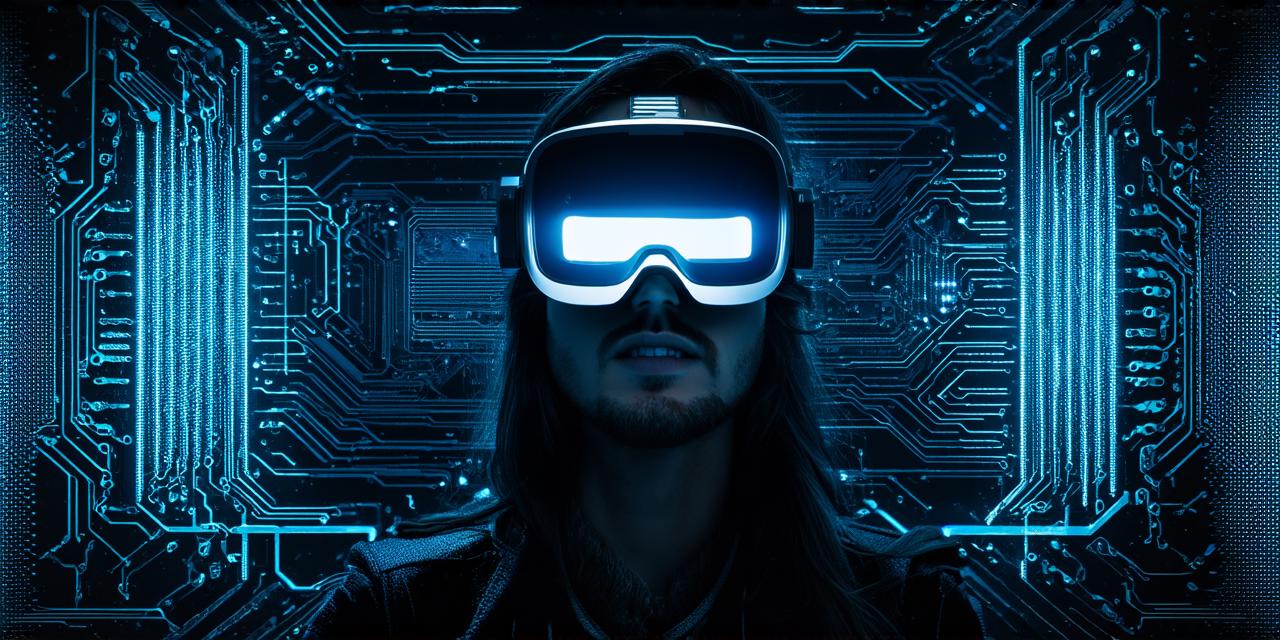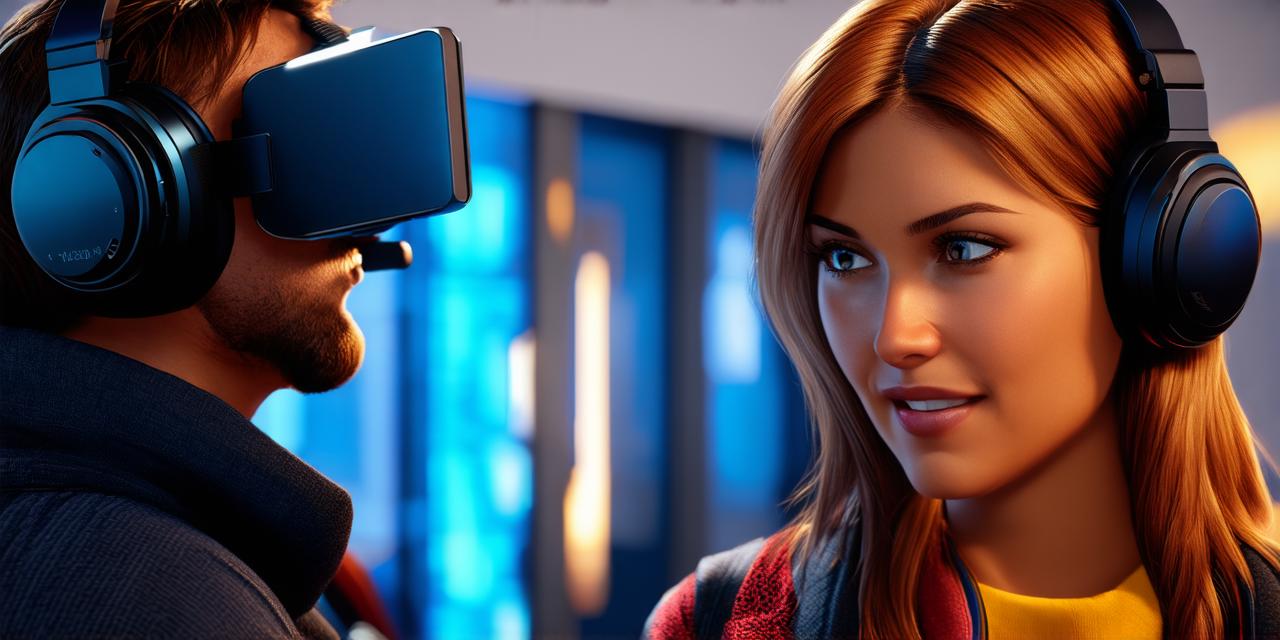Introduction
Virtual reality (VR) therapy is gaining popularity as an innovative treatment for a range of mental health conditions. It’s a powerful tool that can help patients overcome phobias, manage chronic pain, and even improve their overall quality of life. In the field of augmented reality (AR), VR therapy has the potential to revolutionize the way we approach psychological care.
Applications of VR Therapy in AR Development
One of the most promising areas where VR therapy could have a significant impact is in the treatment of anxiety disorders. AR technology can be used to create realistic simulations of anxiety-provoking situations, allowing patients to confront and overcome their fears in a controlled environment. For example, a patient with a fear of flying can experience a virtual flight simulator that mimics real-life flying conditions, giving them the opportunity to practice coping strategies and gradually build confidence in their ability to fly safely.
Another area where VR therapy could be effective is in the treatment of post-traumatic stress disorder (PTSD). AR can provide a safe space for patients to confront traumatic memories and emotions, helping them process and heal from past experiences. For instance, a veteran who experienced combat-related trauma can use an AR application that simulates battle scenarios, allowing them to work through their emotional responses to these triggers in a controlled environment.
VR therapy can also be used in the treatment of chronic pain conditions such as fibromyalgia and migraines. By creating immersive experiences that distract patients from their pain and provide a sense of control over their environment, VR therapy can help reduce the perception of discomfort and improve overall well-being. For example, an AR application could create a virtual garden or aquarium that promotes relaxation and reduces anxiety, helping patients to better manage their chronic pain.
Case Studies and Expert Opinions
There is a growing body of research supporting the effectiveness of VR therapy in treating various mental health conditions. One such study published in the Journal of Anxiety Disorders found that VR exposure therapy was effective in reducing symptoms of anxiety disorders, including panic disorder and social anxiety disorder. Another study published in the Journal of Psychiatric Research found that VR therapy was effective in reducing chronic pain in patients with fibromyalgia.
In addition to these studies, there are several real-life examples of VR therapy being used successfully in AR development. For instance, the company MindfulVR has developed an AR application called “MindfulVR Pain Relief” that uses virtual reality to help patients manage chronic pain. The app provides guided meditation and relaxation exercises, as well as immersive experiences that distract patients from their pain and promote a sense of control over their environment.

According to Dr. Andrew Shatte, a professor of psychiatry at the University of Toronto and a leading researcher in VR therapy, “VR therapy has the potential to revolutionize the way we approach mental health care. It provides a safe and controlled space for patients to confront and overcome their fears, reducing the risk of relapse and improving overall well-being.”
Comparing VR Therapy with Traditional Therapy
While traditional therapy can be effective in treating many mental health conditions, it often relies on talk therapy and other verbal techniques that may not be as engaging or immersive as VR therapy. By providing a more realistic and interactive experience, VR therapy has the potential to increase patient engagement and motivation, leading to better outcomes and faster recovery times.
In addition, VR therapy can be more cost-effective than traditional therapy in the long run. While the initial investment required for VR equipment and software may be higher, the ongoing costs of maintenance and upkeep are often lower than those associated with traditional therapy. In addition, VR therapy can provide a more personalized experience that is tailored to each patient’s individual needs and preferences.
FAQs
1. What types of mental health conditions can VR therapy be used to treat?
VR therapy can be used to treat a range of mental health conditions, including anxiety disorders, PTSD, chronic pain, and depression.
2. How does VR therapy work in AR development?
VR therapy in AR development involves creating immersive experiences that simulate real-life situations or triggers, allowing patients to confront and overcome their fears or manage chronic pain in a controlled environment.
3. Is VR therapy more effective than traditional therapy?
While both VR and traditional therapy can be effective in treating various mental health conditions, VR therapy has the potential to increase patient engagement and motivation, leading to better outcomes and faster recovery times.
4. What are some real-life examples of VR therapy being used successfully in AR development?
There are several real-life examples of VR therapy being used successfully in AR development, including MindfulVR’s “MindfulVR Pain Relief” application and the use of VR exposure therapy to treat PTSD.
Conclusion
In conclusion, virtual reality therapy has the potential to revolutionize the way we approach mental health care in AR development. By providing a safe and controlled space for patients to confront and overcome their fears or manage chronic pain, VR therapy can help improve overall well-being and reduce the risk of relapse.




